Art Nouveau is a style of art and architecture that originated in Europe in the late 19th century. Inspiration for this aesthetic often came from nature, following the natural and sinuous shapes of plants and flowers. We also see a large focus on dynamics, movement, and asymmetry, within Art Nouveau, as well as a focus towards more modern materials. This is what really drew me in to learning more about this movement, as seeing all the organic and asymmetric curves caught my eye as being something that I hadn’t really seen before and something that I wanted to explore further. Art Nouveau aimed to challenge the traditional boundaries that existed between fine arts, such as painting and sculpture, and applied arts. This movement sought to integrate artistic elements into various aspects of everyday life. It found widespread expression in disciplines like interior design, graphic arts, furniture, glass art, textiles, ceramics, jewelry, and metalwork.
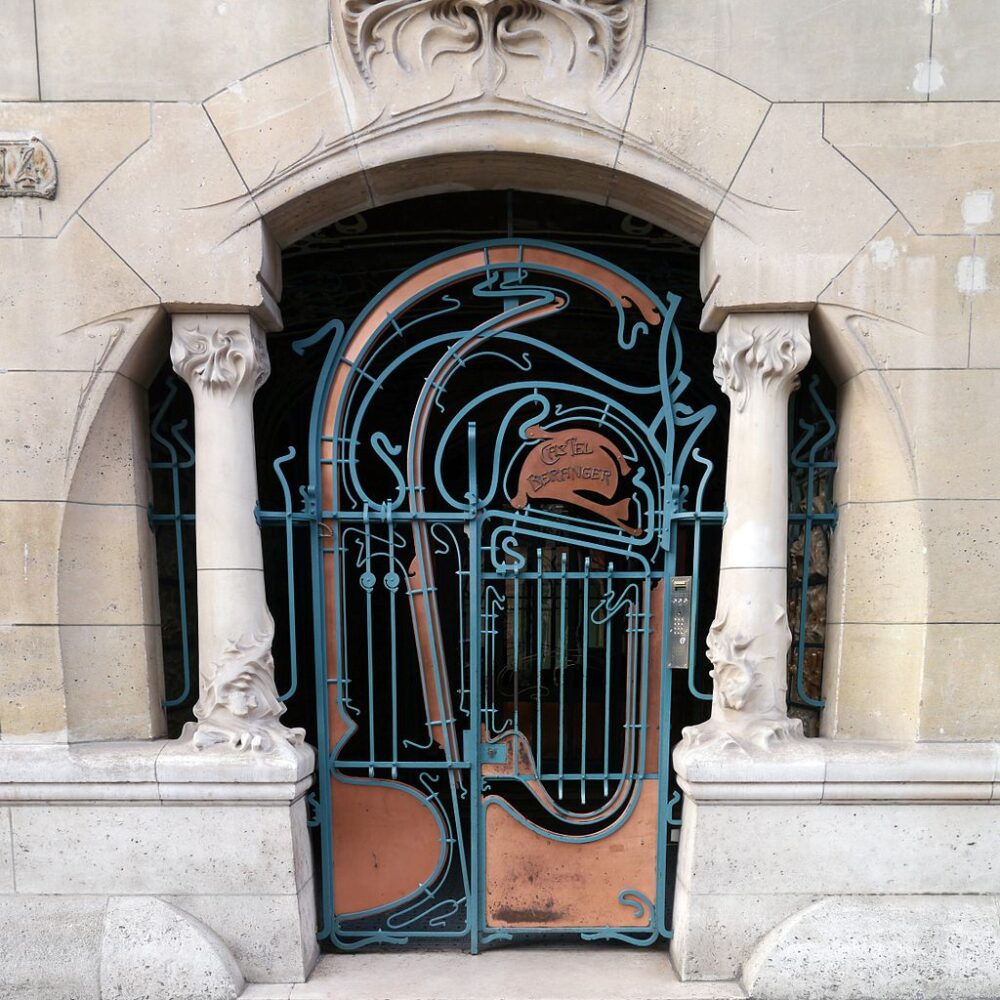
Gateway of the Castel Béranger by Hector Guimard (1895–1898)
The first usage of the term “Art Nouveau” was in the late 1880s, in the Belgian journal L’Art Moderne, and pertained to the work of Les Vingt, a group of twenty artists, mainly painters and sculptors, who were seeking reform through art. The new art movement had its roots in Britain, in the floral designs of William Morris, and in the Arts and Crafts movement founded by the pupils of Morris. Influenced deeply by the socially aware teachings of Morris, Art Nouveau designers aimed to achieve the synthesis of art and craft, as well as the creation of the spiritually uplifting Gesamtkunstwerk (“total work of art”) encompassing a variety of media. The first Art Nouveau houses and interior decorations emerged in Brussels during the 1890s, evident in the architectural and interior design of residences crafted by Paul Hankar, Henry van de Velde, and notably Victor Horta, with the completion of the Hôtel Tassel in 1893. Art Nouveau swiftly moved to Paris, finding adaptation in the work of Hector Guimard. Having witnessed Horta’s creations in Brussels, Guimard applied the style to the entrances of the newly established Paris Metro.
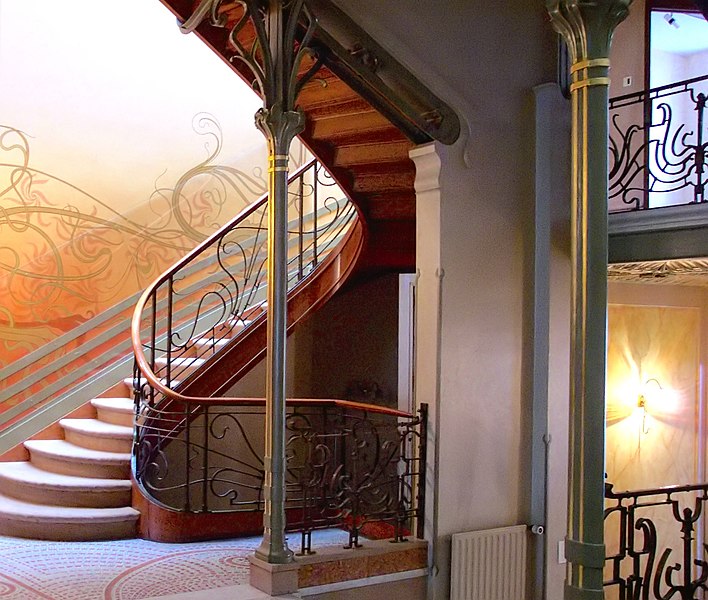
Stairway of Tassel House (Hôtel Tassel), Brussels by Victor Horta (1893)
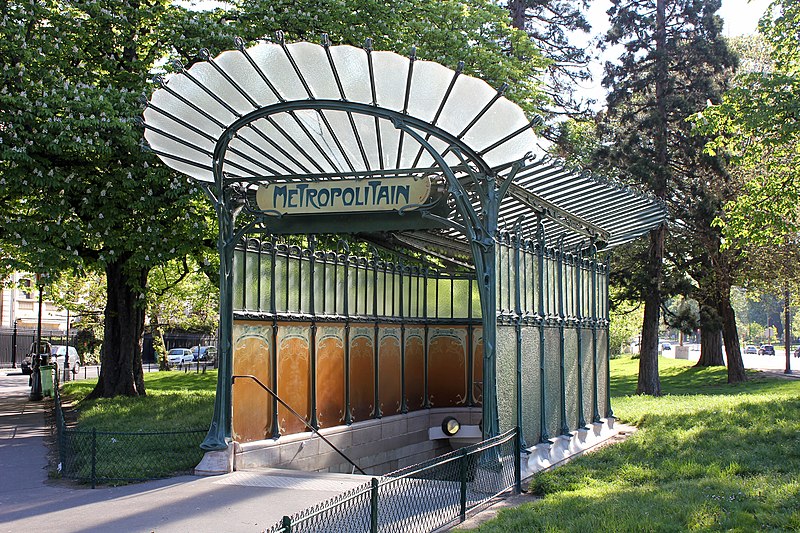
The entrance of metro station Porte Dauphine in Paris 16th arrondissement, France by Hector Guimard (1900-1913)
Early Art Nouveau, particularly in Belgium and France, featured flowing, undulating forms inspired by nature, such as lilies, vines, and flower stems. Victor Horta’s interiors, along with the decorative works of Louis Majorelle and Émile Gallé, exemplified this organic and curvilinear aesthetic. Additionally, the movement incorporated patterns from Japanese art, including butterflies and dragonflies, which were popular in Europe during that era. As Art Nouveau progressed beyond 1900, there was a shift towards more purely decorative elements with more stylized lines. The original curving forms transformed into polygons and eventually geometric shapes, gaining popularity in Germany and Scandinavia.
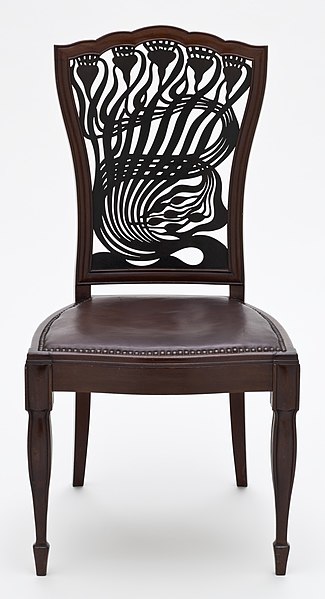
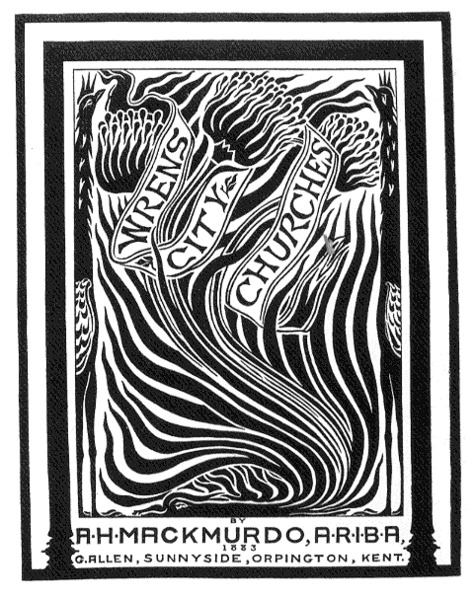
Left: Mahogany Chair designed by Arthur Mackmurdo, England (1882-83)
Right: Front cover of Wren’s City Churches by Mackmurdo, a print from The Hobby Horse (England), published by G. Allen (1883)
Japonism was another important element in shaping the Art Nouveau style. This was a wave of enthusiasm for Japanese woodblock printing, particularly the works of Hiroshige, Hokusai, and Utagawa Kunisada, which were imported into Europe beginning in the 1870s. Elements from these prints influenced Art Nouveau graphics, porcelain, jewelry, and furniture. New technologies in printing and publishing allowed Art Nouveau to quickly reach a global audience. Art magazines, illustrated with photographs and color lithographs, played an essential role in popularizing the new style. The pinnacle of Art Nouveau came at the Paris 1900 Exposition Universelle, attracting nearly fifty million visitors from around the world. The exposition showcased the diverse elements of the style, including architecture, design, glassware, furniture, and decorative objects, marking a high point in the movement’s visibility and influence.
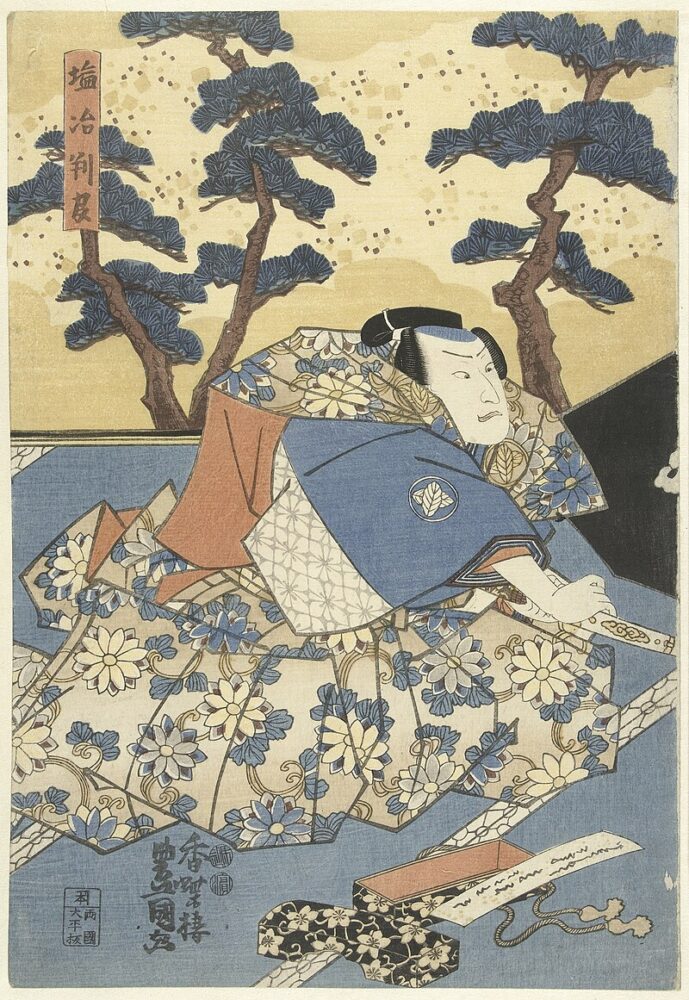
Japanese woodblock print by Utagawa Kunisada (1850s)
Criticized for its “primitive extravagances”, Art Nouveau started to fade away after the start of the First World War. This is likely due to a shift in mindset as the stage was set for WW1. People found the strange and elaborate designs and architecture of the Art Nouveau movement to be a waste of time and resources that could go to towards the war effort, especially in more central and eastern Europe. Despite this, Art Nouveau, with its emphasis on organic forms and the synthesis of art and craft, laid the groundwork for Art Deco. While Art Nouveau embraced natural motifs and flowing lines, Art Deco emerged in the 1920s with a focus on the more streamlined and geometric aesthetic that we saw emerge during the later waves of the Art Nouveau movement. The transition from the intricate and nature-inspired Art Nouveau to the sleek and stylized Art Deco marked a shift towards a more modern and industrialized approach in the world of design and art.
Images:
- https://upload.wikimedia.org/wikipedia/commons/f/f9/Castel_B%C3%A9ranger%2C_February_16%2C_2013.jpg License: Groume, CC BY-SA 2.0 <https://creativecommons.org/licenses/by-sa/2.0>, via Wikimedia Commons
- https://upload.wikimedia.org/wikipedia/commons/a/af/Tassel_House_stairway.JPG
- https://upload.wikimedia.org/wikipedia/commons/c/ce/Paris_Metro_2_Porte_Dauphine_Libellule.JPG
- https://upload.wikimedia.org/wikipedia/commons/5/5f/Chair_LACMA_M.2009.115_%285_of_5%29.jpg
- https://upload.wikimedia.org/wikipedia/commons/2/28/MackmurdoWren1883.gif
- https://upload.wikimedia.org/wikipedia/commons/a/ac/Acteur_als_hoveling-Rijksmuseum_AK-MAK-1601A.jpeg
Sources:
- Heilbrunn Timeline of Art History, Metropolitan Museum of Art, Art Nouveau https://www.metmuseum.org/toah/hd/artn/hd_artn.htm
- Victor Horta Archived 19 April 2019 at the Wayback Machine – Encyclopædia Britannica
- World Heritage Centre, UNESCO. “Major Town Houses of the Architect Victor Horta (Brussels)”. whc.unesco.org. Archived from the original on 13 May 2013
- “Chair | Mackmurdo, Arthur Heygate | V&A Explore the Collections”. 1883. Archived from the original on 27 February 2020
- Wikipedia, History of Art Nouveau https://en.wikipedia.org/wiki/Art_Nouveau#History


2 Comments. Leave new
Hey Max,
I have never heard about Art Nouveau before so this was a nice introduction into the art form. I really like how you detailed the evolution of Art Nouveau and the influential figures of each era. It was also very interesting learning about its downfall as well with it being eventually replaced by Art Deco. A question that I had while reading this was toward the end where I was interested in learning more about why it was regarded as primitive extravagances. I wonder why they would suddenly start changing their mindset about Art Nouveau.
Hi Max,
This was a nice read. Great job encapsulating the themes and history behind Art Nouveau. I like the dynamic movements that occur in this aesthetic. It seems like a lot of the art and this time tries to capture motion in a still piece. What attracted you to this aesthetic?